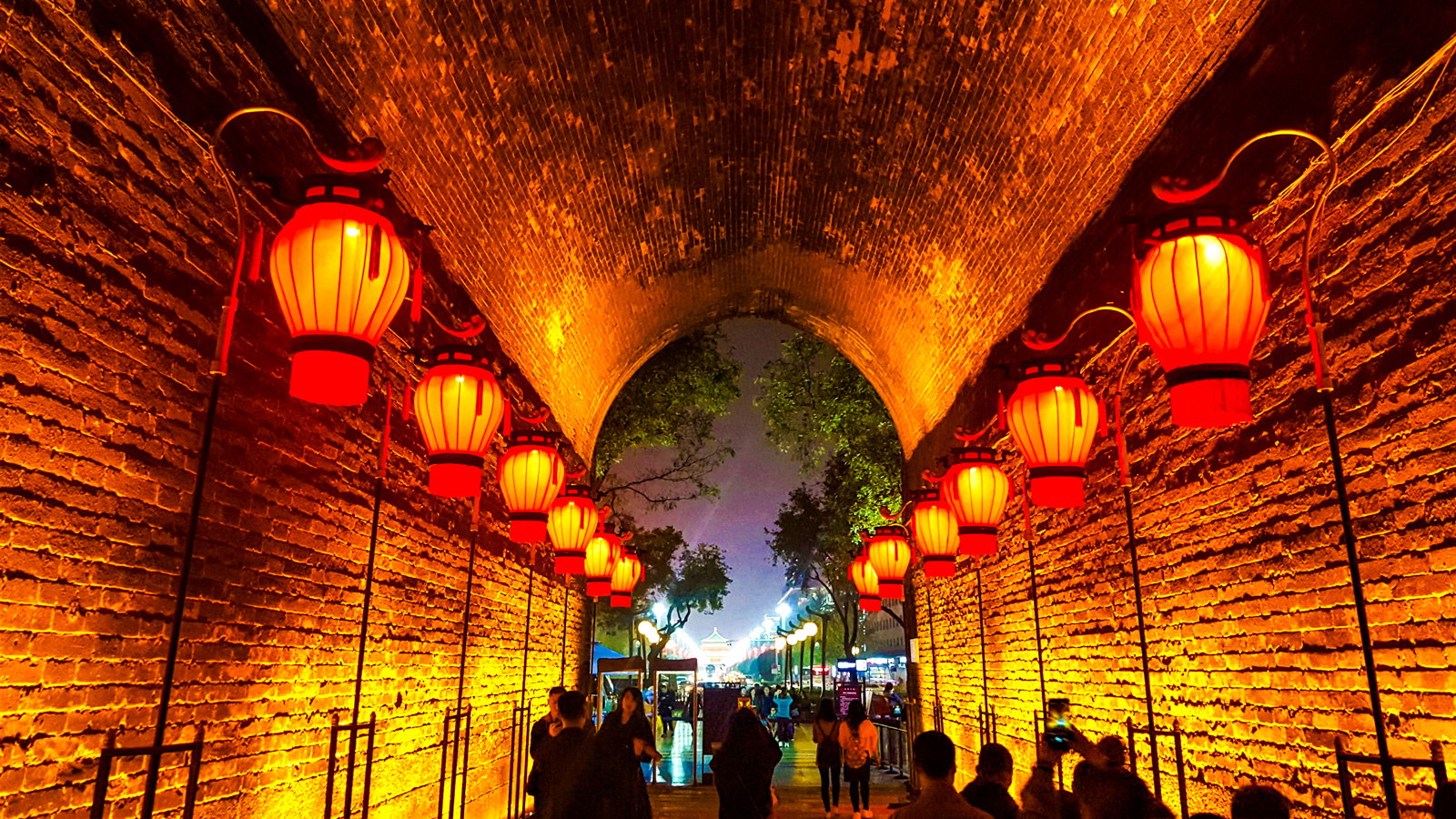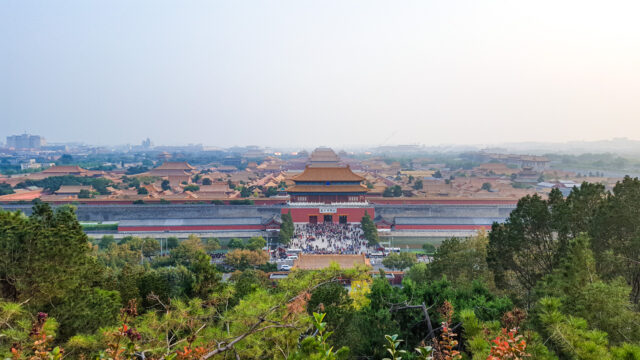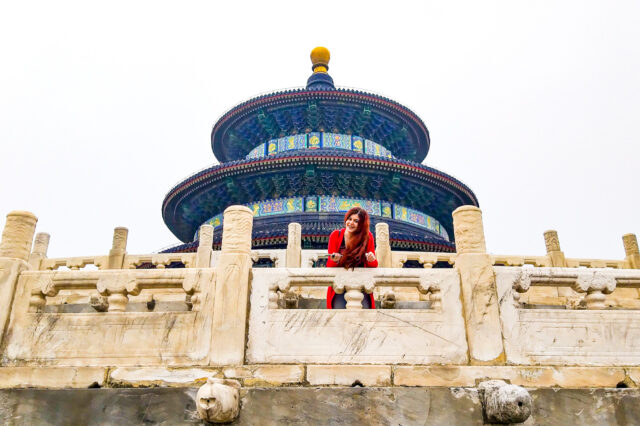Xi’An – the capital of China throughout 13 dynasties and 10 centuries, a city with a history of over 5 millenniums, definitely doesn’t need advertising. The city was the Easternmost point of the silk road. The caravans departed from here. This is where it got the Islamic influence.
As a result of its fame, the city receives millions of tourists every year. Compared to Beijing and Shanghai, it is also rather cheap and has delicious food options. Unfortunately, there is also another side to this city, it is a developed industrial city and quite polluted.
Useful Tips for Visiting Xi’An
- Xi’An is currently served by two railway stations and an international airport. The High Speed Railway Station is the North Railway Station. If you are coming from major cities, like Beijing or Shanghai, you will arrive here.
- The city has continuously expanding network of public transport. Currently, it has 9 metro lines and more are in pipeline. As in other Chinese cities, buses aren’t very convenient, unless you speak Mandarin or at least can read the alphabet. We used buses on several occasions based on the suggestions of hotel stuff, but it still was quite a hassled, so if you can avoid them, I recommend to do so. If you are staying in the city for at least a couple of days, consider getting the Xian Transportation card, which gives small discount, when using transport and just makes things more convenient. However, as the card costs 18 yuan and you need to charge it on top of that, it may not be efficient for short stays.
- Even if by Chinese standards, the city is not that huge, it is quite big, which I didn’t realize previously. That’s why, the traffic can be heavy, especially during mornings and taking buses is inconvenient. Best would be to stay inside the Xian City Wall area, but if you are on a strict budget, at least make sure to book your accommodation near a metro station to make your stay easier.
Arrival Day
We arrived to the Xi’An North station late in the evening. The station is new and sleek and also covers an open huge area. The hotel I booked suggested that we should take a taxi and it would cost about 30 yuan. As the hotel wasn’t close to any metro station (we realized later, that booking this hotel was a mistake), taxi really was the best option, so we took it. We headed to the official taxi stand, which exists at every train station and were directed to the free taxi. This was our first time taking a taxi in China and I was apprehensive of any cheating, but everything went smoothly. It was a 15 minute ride to the center and it really cost 30 or 31 yuan.
Having 2 days to explore Xi’An sights is a good amount of time to cover all major place.
Day 1 Itinerary
Terracotta warriors
Price (high season): 150 yuan.
On our first morning in Xi’An, we woke up bright and early (okok, it wasn’t so bright, as mornings never are for me :)) and headed to Terracotta warriors.
South gate of the Xi’An Wall
Price: 54 yuan.
After making it back to the Xi’An railway station, you can take metro line 4 and change to line 6 to get to Yongningmen station. Alternatively, there are direct buses, such as 603 and 611, that can take you to the Bell Tower and to the South gate of the Xi’An Wall.
I suggest to go to the Three sisters restaurant before the South gate (it’s only a few minutes away). The restaurant is simple and no frills with nice food, especially the dumplings. Afterwards, get to the gate, while it’s light.
Note: If you only have one day in the city, visit the Bell & Drum towers before heading to the South gate to maximize your time in Xi’An.
The wall at this location was originally constructed during the Tang dynasty reign in the 7th century. However, the wall you will be seeing now is the well-preserved 14th century construction.
There are four main gates (18 gates in total). You can walk entire perimeter of the wall, if you like, which should take you about 3-4 hours. Alternatively, you can do a part of the walk.
The South gate is the most beautiful and, hence, most popular. It boasts with numerous famous visitors. You will find a number of photos while visiting the gate, showing the prominent people visiting it. Even the tickets are extremely pretty.
You can walk around the small area of the wall, or rent a bike, if you like and ride along the wall for a couple of hours. Keep in mind that it won’t be a smooth ride and after rain it can be slippery, so be careful. We chose to simply walk around and enjoy the views.
There are a number of free ceremonial performances held at the South Gate daily. This is the information I found:
- 9:30 daily – Opening Ceremony
- 11:00, 14:00, 17:00 daily – Warrior Parade Performance
- 10:00, 15:00 daily – Warriors Changing of the Guard Ceremony
If you want to watch these performances, I suggest to come back here next morning to watch several of them (see the information in the Day 2 itinerary below).
In the evenings daily (except Monday) at 8.30pm, they have Tang Dynasty Grand Welcoming Ceremony light shows at the south gate. Tickets are 60 yuan (currently they may include the entrance to the wall, which makes it a good value, so double check this information).
Overall, the reason I am suggesting to come here in the late afternoon is to enjoy walking on the wall during the daytime and evening as well. So do stay on the wall, until it gets dark and see the lights being lit. The views of the lit street leading to the Bell tower are beautiful. Besides, you can maybe catch the light show as well.
Day 2 Itinerary
Xian South Gate Performances
Free of charge.
Consider going back to the South gate to watch the performances at the South gate in the following order:
- 9.30am – Opening Ceremony
- 10am – Changing of the Guard
- 11am – Warrior Parade
After this you can head to the Bell and Drum Towers either by walking or taking metro line 2, it’s 1 stop away.
Xian Bell and Drum Towers
Ticket for both towers together: 50 yuan; you can get a student discount (but technically not with non-Chinese card, unless the cashier is nice)
Start your day by visiting Bell and Drum towers. You can get to them by metro line 2, get off at the Zhonglou station Exit B.
Every big city in China has these two towers close together. but the ones in Xi’An are the largest and best preserved, hence, very popular for the visitors. Both of them were built by the end of the XIV century. The main idea of these towers were to announce dawn and dusk to the city population. The bells at the Bell tower were stricken at dawn, hence, the name Bell tower. The drums of the Drum tower were beat at sunset to inform about the end of the day.
Bell tower is located at the heart of the city, at the crossroads. Access to tower is from the underground. When you go down, find a map, which will show you directions for the entrance, otherwise you may wonder in circles. When you go up the base of the tower, it provides nice views over surrounding areas. The tower provides a view of the Drum tower as well, which is located closeby.
You will find a giant Bell here, as you would expect. This is not the original bell from Tang dynasty. That one was moved to a museum for preservation. This one was cast as the duplicate of the original.
Climb to the upper floor for the usual Chinese style pavilions and the roof decorations. Those have been my favourate.
Leaving the Bell tower, come out of the underground towards the west side and head to the Drum tower. In all honesty, I was more fascinated by this one, than by its bigger sister. This one is smaller and cuter and has a number of drums, when you climb to its base. Some even say that you will find the world’s largest drum here (but I highly doubt that information is correct 🙂 You can even try your skills of beating the drums, people did with the help of the guards 🙂
While here, we caught an interesting performance. Obviously, it was crowded and you can’t sit, but it’s short, so you can stand to listen.
Interesting fact: Both Bell tower and Drum tower have short performances at 9:00, 10:00, 11:00, 15:00, 16:00 and 17:00, so try to time your visit to catch at least one of the shows.
Muslim Quarter
From here you can easily walk the Muslim quarter. The market is busy during the day and night, so visit any time, wander around and get lost in these streets, which are almost always full of people.
If you need to buy any souvenirs, while in China, you will find relatively cheaper prices here. Obviously, as everywhere, you may be quoted a reasonable price (like triple of the real price :D) or 10 times more. Either way, it is easier to find places, where you can bargain and get things at the price, that is ok. We asked at least in a dozen of places to get an idea and the prices we were told had such a huge range, that it dumbfounded us. The sellers who spoke English asked several times more than others. After we got some idea, mom started to bargain using body language, it was quite fun to see. We got several fans as souvenirs.
Muslim quarter has a number of food stalls as well. If you are adventurous eater, you can eat these things. I am not fully sure, what they are. One looks like an octopus I believe.
While here, find the Great Mosque of Xi’An (Price: 25 yuan). It is a fascinating mix of Chinese and Muslim/Middle Eastern architecture. We unfortunately didn’t manage to visit it, as it was too late, when we got to the area. So I obviously have something to come back for 🙂
Shaanxi Museum
Free of charge
If you still have time left and are interested, visit the Shaanxi museum. You can get here by metro, from Dayanta station, passing the Giant Wild Goose Pagoda, which you can visit after the museum. However, if you have limited time, the museum can be skipped, as the whole city, as so many cities in China is full of museums.
As the museum is free, there are queues. They let a limited number of people every day (I believe they have only 6 thousand tickets), so if you decide to go, be sure to double check, you will be able to get in, before you start queueing.
Wild Good Pagoda
Price for going up the pagoda: 30 yuan
From the museum walk to the Giant Wild Goose pagoda. It was first constructed in the 7th century, during the Tang Dynasty. The Buddhist pagoda is surrounded by beautiful gardens.
Every day at 12.00 and 20.00, there is a fountain show at the pagoda.
Tang Paradise (maybe)
Price: 120 yuan.
Nearby Wild Goose Pagoda, you will find a theme park dedicated to the history of Tang dynasty. The park has a lake, numerous different reconstructions of the old era buildings, gardens, etc. There are also free folk performances inside the park. These are held in the evenings, therefore, it is particularly popular to visit in the evening.
Have you been to Xi’An? What was your impression?
See also:



